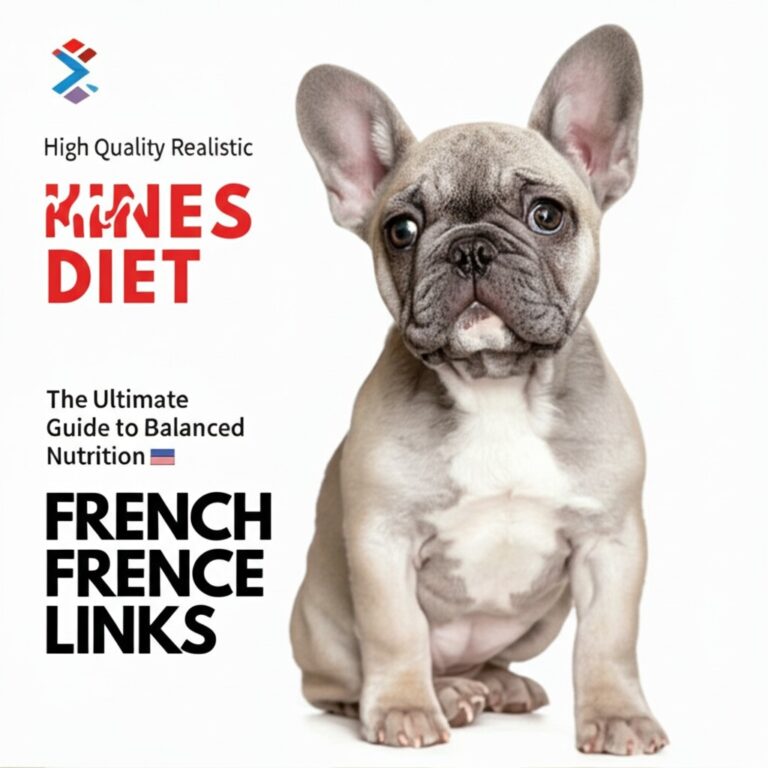French Bulldogs are adorable and lovable companions, but when it comes to reproduction, they face unique challenges. One of the most common procedures required for French Bulldogs is a Caesarian section, or C-section. In this article, we will explore why French Bulldogs need C-sections, the risks involved, and how to ensure a safe and successful procedure for both the mother and her puppies.
Key Takeaways:
- French Bulldogs often require C-sections due to their brachycephalic (short-faced) anatomy, which can lead to complications during natural birth.
- C-sections are not only necessary in emergency situations but also in non-emergent cases to reduce the risks associated with natural birth.
- The perianesthetic period during C-sections requires careful management to ensure the well-being of the dam and her puppies.
- Oxygenation and ventilation play crucial roles in supporting the dam during C-sections.
- Risks and medication choices must be carefully considered to maintain the neonates’ heart rate and address potential complications.
The Perianesthetic Period for C-sections

During a C-section procedure, the perianesthetic period is a critical time that requires careful management to ensure the well-being of the dam and her puppies. Canine obstetrics and case management are essential in minimizing the time the dam is under anesthesia and coordinating the efforts of the surgical team.
Induction should take place in the operating room (OR), with one team preparing the dam while the surgeon scrubs and gowns. A team approach is beneficial in optimizing efficiency and reducing the overall time the dam spends under anesthesia.
Oxygenation and assisted ventilation play a vital role in maintaining the dam’s well-being. It is important to monitor the dam closely and provide resuscitation to the puppies if necessary. Prompt intervention and coordination between the team members are key in managing any potential complications that may arise during the perianesthetic period.
Proper perianesthetic management is crucial during C-sections to ensure the safety and well-being of both the mother and her puppies.
The Perianesthetic Period for C-sections
| Key Considerations | Actions |
|---|---|
| Minimize time under anesthesia | Coordinate team efforts for efficient preparation |
| Oxygenation and assisted ventilation | Monitor dam closely and provide resuscitation if needed |
| Prompt intervention | Coordinate between team members to manage potential complications |
Supporting the Dam During C-sections
During a C-section procedure for French Bulldogs, it is essential to provide proper support to the dam to ensure her well-being and the success of the surgery. One crucial aspect is oxygenation, which plays a significant role in the overall health of both the dam and her puppies. To reduce the risk of hypoxemia, pre-oxygenation with a tight-fitting facemask should be administered. This helps to optimize oxygen levels and minimize potential complications during the procedure.
Positioning the dam in dorsal recumbency on the operating room table is also important. This position helps address issues like compression atelectasis and altered ventilatory mechanics that can occur due to the pressure from the gravid uterus. By ensuring proper positioning, the risk of complications can be reduced, and the surgical team can have better access to the uterus, facilitating a smoother procedure.
Another concern during a C-section is nausea, vomiting, and regurgitation, which can be caused by the pressure from the gravid uterus. To mitigate these issues, injectable maropiant can be administered to the dam. Maropiant helps reduce gastric compression and provides mild analgesia, helping to alleviate discomfort and minimize the chances of complications arising from these symptoms.
| Supporting the Dam During C-sections | |
|---|---|
| Key Considerations | Actions |
| Oxygenation | Pre-oxygenate the dam with a tight-fitting facemask |
| Positioning | Place the dam in dorsal recumbency to address compression atelectasis and altered ventilatory mechanics |
| Nausea and Vomiting | Administer injectable maropiant to the dam to reduce gastric compression and provide mild analgesia |
Please note: The specific procedures and medications mentioned should always be conducted under the guidance of a licensed veterinarian. Individual cases may vary, and veterinary expertise is crucial in determining the appropriate course of action for each situation.
Risks and Recommended Medications for C-sections

Ensuring the safety and well-being of the neonates during a C-section procedure involves careful consideration of the potential risks and the use of appropriate medications. It is essential to monitor the neonate’s heart rate, as certain medications commonly used during C-sections can have adverse effects on cardiac output.
Analgesic premedications and sedatives, while beneficial for the dam, can cause bradycardia and other complications in puppies. Therefore, it is crucial to exercise caution when administering these medications to minimize any potential harm. Additionally, an intravenous catheter should be placed in the dam without premedications to ensure quick access for emergency interventions if needed.
It is important to note that certain medications, such as ketamine, should be avoided due to their potential negative impact on neonatal heart rate. Instead, alternative medications that do not pose the same risks should be considered. In cases of hypovolemia in periparturient dams, intravenous fluid bolus and vasopressor support may be necessary to manage the condition effectively.
| Medication | Risk for Neonates |
|---|---|
| Analgesic premedications | Potential for bradycardia and complications |
| Sedatives | Potential for bradycardia and complications |
| Ketamine | Negative impact on neonatal heart rate |
By understanding and carefully managing the risks associated with medications during C-sections, veterinarians can help ensure the best outcomes for both the dam and her neonates.
When are C-sections Recommended for French Bulldogs?
Natural labor difficulties can occur in French Bulldogs, and an elective C-section may be recommended in certain circumstances. Due to the breed’s brachycephalic nature and physical characteristics, such as their narrow pelvis and large heads, French Bulldogs are not always capable of a safe vaginal delivery. This can lead to complications during labor and an increased risk of harm to both the mother and her puppies.
In cases where there is only one puppy present, the likelihood of successful natural birth is significantly reduced. Additionally, if the puppies are exceptionally large or if the mother has underlying health issues that could complicate labor, a scheduled C-section is often the safer option.
Responsible breeders recognize the importance of the dam’s well-being and limit the number of C-sections a dog can have. This helps to minimize the potential risks associated with multiple surgeries and ensures the long-term health and fertility of the mother. By opting for an elective C-section when necessary, breeders can help ensure the successful delivery of healthy French Bulldog puppies.
Please note: The decision to recommend a C-section should always be made in consultation with a veterinarian who is experienced in canine obstetrics.
| Factors Considered for Elective C-section in French Bulldogs | Explanation |
|---|---|
| Presence of only one puppy | The likelihood of successful natural birth diminishes when there is only one puppy present. |
| Large puppies | If the puppies are too large for the dam’s narrow birth canal, a C-section may be necessary. |
| Underlying health issues | If the mother has health conditions that could complicate labor, a C-section is often recommended to minimize risk. |
| Breeds not capable of vaginal delivery | French Bulldogs, being a brachycephalic breed with physical characteristics that make natural birth challenging, are not capable of a safe vaginal delivery. |
By understanding the natural labor difficulties that French Bulldogs may face and following the guidance of experienced veterinarians, breeders can ensure the well-being of both the mother and her puppies during the birthing process.
Preparing for Your French Bulldog’s C-section

When it comes to preparing for your French Bulldog’s C-section, there are a few important steps to follow. First and foremost, it’s crucial to stop using flea and tick products at least a week before the surgery. These products can interact with the anesthesia and potentially cause complications. Maintaining a pest-free environment is still important, but consult with your veterinarian for alternative flea and tick prevention methods during this time.
An Adaptil (DAP) collar can be beneficial for your French Bulldog in the days leading up to the C-section. This collar contains a synthetic copy of the natural appeasing pheromone produced by mother dogs, which can help reduce stress and anxiety. Start using the collar a few days before the procedure to help your dog feel more comfortable and relaxed.
Prior to the surgery, give your French Bulldog a bath a day or two beforehand. This will help ensure that your dog is clean and free from any dirt or debris that could potentially cause an infection after the surgery. Additionally, it’s important to withhold food on the day of the surgery. This is to prevent any complications that could arise from your dog having a full stomach during the procedure, such as regurgitation or aspiration.
Lastly, it’s crucial to discuss any medications that your French Bulldog is currently taking with your veterinarian. They will be able to advise you on whether these medications should be withheld on the day of surgery. It’s important to follow their guidance to ensure the safety and well-being of your dog during the C-section procedure.
| Preparation Steps for Your French Bulldog’s C-section |
|---|
| Stop using flea and tick products at least one week before the surgery. |
| Apply an Adaptil (DAP) collar a few days before the procedure to help reduce stress. |
| Give your French Bulldog a bath a day or two before the surgery to ensure cleanliness. |
| Withhold food on the day of the surgery to prevent complications. |
| Discuss any medications your dog is taking with your veterinarian. |
Care for the Mother and Puppies After C-section
After a C-section, the mother and her puppies require special care to ensure their well-being and a smooth recovery process. It is crucial to monitor the mother closely during her anesthesia recovery period, making sure she does not injure herself or the puppies. Within a few hours after the procedure, the mother should be encouraged to start eating, and her food intake can be gradually increased over time.
A bloody vaginal discharge is normal for a few days after the C-section, but any prolonged discharge or signs of infection should be promptly addressed by a veterinarian. The type of stitches used during the surgery will determine whether they need to be removed or if they will dissolve on their own. It is essential to follow the vet’s instructions regarding the care of the incision site to prevent any complications.
Proper care for the puppies is equally important during the post-C-section period. Supplementing their nursing with a milk replacer, if necessary, can ensure they receive adequate nutrition. Additionally, maintaining an optimal room temperature is crucial for their comfort and health. A warm, cozy environment will help the puppies thrive and minimize any risk of hypothermia.
| Care for the Mother | Care for the Puppies | |
|---|---|---|
| Anesthesia Recovery | Monitor closely | N/A |
| Vaginal Discharge | Normal for a few days | N/A |
| Stitches | Follow vet’s instructions | N/A |
| Caring for Puppies | N/A | Supplement nursing with milk replacer if needed |
| Room Temperature | N/A | Maintain optimal warmth |
Providing the necessary care and attention to both the mother and her puppies will contribute to their overall well-being and a successful recovery after the C-section. If you have any concerns or notice any abnormal symptoms during the post-operative period, do not hesitate to seek veterinary attention promptly.
Post-Surgical Care for C-Section Recovery

After a C-section, it is crucial to provide proper post-surgical care for the mother and her puppies. C-section recovery typically takes two to six hours for anesthesia to wear off. During this time, closely monitor the mother for any signs of complications and ensure she does not injure herself or the puppies.
The mother may experience mild temperature changes and a bloody discharge, which are normal and should resolve within a week. However, it’s important to keep a close eye on her to ensure there are no prolonged or concerning symptoms. If you notice any signs of infection, excessive bleeding, or uterine damage, seek prompt veterinary attention.
Additionally, caring for the puppies is crucial during the recovery period. Supplement their nursing with milk replacer if needed and maintain an appropriate room temperature to keep them comfortable. Proper nursing assistance and monitoring their well-being are essential for their growth and development.
Overall, C-section recovery requires diligent post-operative care. Keep a watchful eye on the mother and puppies, ensuring their comfort and well-being. If you have any concerns or notice any complications during the recovery period, do not hesitate to seek veterinary assistance.
FAQ
Why do French Bulldogs often require a C-section?
French Bulldogs often require a C-section for the safety of both the mother and her puppies. Natural birth can lead to complications and higher mortality rates, especially for brachycephalic breeds like French Bulldogs.
What is the perianesthetic period during C-sections?
The perianesthetic period during C-sections is the time when the dam is under anesthesia. It requires careful management to minimize the time under anesthesia and ensure proper team coordination.
How is oxygenation important during C-sections?
Oxygenation plays a crucial role in the well-being of both the dam and her puppies during C-sections. Pre-oxygenation with a tight-fitting facemask reduces the risk of hypoxemia.
What medications should be avoided during C-sections?
Certain medications used in C-sections can negatively impact the heart rate of neonates. Medications like ketamine should be avoided to ensure the safety of the puppies.
When are C-sections recommended for French Bulldogs?
C-sections may be recommended in French Bulldogs when natural labor difficulties occur, or in certain circumstances such as the presence of only one puppy, large puppies, underlying health issues, or breed considerations where vaginal delivery is not safe.
How should I prepare for my French Bulldog’s C-section?
To prepare for your French Bulldog’s C-section, flea and tick products should be stopped at least a week before the surgery, an Adaptil (DAP) collar can be applied for stress management, and the dog should be bathed a day or two before the surgery. Food should be withheld on the day of the surgery, and any medications should be discussed with the vet for guidance.
What care is needed for the mother and puppies after a C-section?
After a C-section, the mother should be closely monitored, encouraged to start eating within a few hours, and her food intake should be gradually increased. A bloody vaginal discharge is normal for a few days after birth, but prolonged discharge or signs of infection should be addressed. Stitches may or may not need to be removed depending on the type used. Proper care for the puppies, including nursing assistance and maintaining an appropriate room temperature, is crucial for their well-being.
What is the recovery period like after a C-section?
The recovery period after a C-section typically requires two to six hours for anesthesia recovery. The mother may experience mild temperature changes and a bloody discharge, which should resolve within a week. Complications such as infection, bleeding, and uterine damage should be monitored for. Proper care for the puppies, including nursing assistance and maintaining an optimal room temperature, is crucial for their well-being.
What should I do if there are any concerns or complications during the recovery period?
If any concerns or complications arise during the recovery period after a C-section, veterinary attention should be sought promptly.
Source Links

- https://vetmed.illinois.edu/2022/05/01/anesthesia-for-caesarian-section-in-dogs/
- https://www.sandiegobayanimalhospital.com/site/blog/2022/05/31/c-section-dogs
- https://vcahospitals.com/know-your-pet/caesarean-sections-in-dogs-post-operative-instructions
Hi, I’m Alex! At FrenchyFab.com, I share my expertise and love for French Bulldogs. Dive in for top-notch grooming, nutrition, and health care tips to keep your Frenchie thriving.



